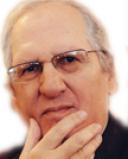Anger
The Primacy of Anger Problems
Anger is a primary emotion.
Posted January 18, 2009 Reviewed by Kaja Perina
Since fellow PT blogger Dr. Steven Stosny and I both share similar concerns with the increasing problem of pathological anger or rage in our culture, I want to comment on a recent posting of his, in which Dr. Stosny broadly depicts anger problems as "a smokescreen for fear-shame phobia."
The problem of anger and rage is of vital importance not only in our daily emotional life, but in the genesis of most mental disorders, violence, spiritual development, and creativity. Anger is inaccurately considered by some psychotherapists to be a secondary rather than primary emotion. Of course, there is some truth to this: Anger, like anxiety, is a reaction to something threatening to the physical and/or psychological, spiritual or existential integrity of the individual. But anger is not a passive helplessness or hopelessness in the face of such a threat. It is not flight, but fight. It is an assertion of the individual's most basic right to being an individual. As in other species, without this capacity for anger or even rage, we would be unable to defend ourselves or those we love when needed. To fight for freedom and what we truly believe in and value. We would be unable to face down evil, leaving us even more vulnerable to it. So, in this sense, while anger--like any other emotion such as sadness, grief, fear, joy, disgust, anxiety or shame--is almost always secondary to some internal or external stimulus.
Certainly, much anger and resentment stems from an underlying matrix of neurotic narcissism and sense of entitlement, as Stosny suggests. Frustration, resentment and anger are also generated by what Guatama Buddha called desire or attachment, which is the expectation that life will work out as we wish. Dr. Albert Ellis' Rational Emotive Behavior Therapy (REBT) similarly recognized the frustrating nature of irrational cognitions like "life should be fair." And anger can be and is used by some (not unlike a drug) to cover up painful feelings, fear, anxiety, vulnerability and shame. John Bradshaw referred to such individuals as "rageaholics." The best defense is a good offense. But I submit that to reduce anger or rage in general to the role of "smokescreen" for fear or shame can be problematical, especially from the pragmatic perspective of psychotherapy. I would argue that anger and rage--along with fear, eros, joy, disgust, surprise and sadness --is, as most developmental psychologists agree, a psychobiologically primary human emotion. And that shame is fundamentally a secondary phenomenon, as illustrated, for example, in the case of both Adam and Eve in Eden.
Anger is perhaps the most troublesome and challenging emotion to tackle therapeutically. Since most therapists today see anger or rage as symptoms of underlying fear, hurt or shame, there is a tendency to de-emphasize the importance and primacy of anger in favor of focusing on that which secondarily fuels it. This is a serious therapeutic mistake in my opinion. A monumental and costly failure of contemporary psychotherapy. For those interested, I have written about this difficult conundrum in considerable detail in my book Anger, Madness, and the Daimonic: The Psychological Genesis of Violence, Evil, and Creativity.
In my view, it is a grave error to dismiss anger or rage as secondary and therefore less significant emotions than fear, shame, anxiety or love in the psychotherapy process. Anger is a primary emotion that tends to be repressed in most patients. Indeed, it is an emotion, like the experience of anxiety, about which we often feel shame, due to our negative views of anger. Paradoxically, chronic repression of anger creates resentment, bitterness, hostility, hatred and, in some, an overpowering, irresistable rage. For many, to feel angry is to feel out of control, irrational, unenlightened, uncivilized, and this frequently leads to fear, shame and anxiety. And more repression. So which came first in this vicious cycle, the chicken or the egg?
Most patients who seek psychotherapy suffer far more from "anger phobia" than "shame phobia." Indeed, for most patients, it is easier and seems more acceptable and less threatening to allow themselves to feel shame than anger or rage. In this respect, shame, fear or anxiety can mask anger or rage. Unfortunately, mental health professionals also suffer from anger phobia. Like the patients whom they attempt to help, most therapists are consciously or unconsciously fearful of anger or rage, the daimonic. This is in part a pervasive form of what we clinicians refer to as countertransference. Of course, the daimonic is potentially dangerous and destructive, and naturally evokes some fear. The problem is that patients are themselves already quite fearful of their or own anger, and what might happen if they were to allow themselves to fully feel and express it. If the psychotherapist is also too afraid, he or she colludes with the patient to continue avoiding anger, denying its existential power, relevance and value, focusing instead on fear, pain or shame.
In psychotherapy, the single most powerful and healing intervention the clinician can offer is to listen to the angry patient, and to acknowledge and accept his or her rage. Anger and rage have to first be validated, expressed and understood before the underlying affects or cognitions can be effectively addressed. The dilemma is that most mental health professionals denigrate and demonize anger, dismissing it as an inappropriate, destructive and negative and neurotic emotion. But anger is an appropriate, natural and healthy response to frustration, injury, insult, and anything that threatens one's survival or psychological integrity. We need to be able to get angry at such obstacles, challenges and assaults.
Anger can bestow strength and tenacity in the face of adversity. When we are socialized to view getting angry as negative, evil, immoral or unspiritual, as so many of us have been, we repress our anger--as we repress other impulses or passions of which we are ashamed. This is exactly what Jung describes as the shadow: those aspects of experience we find unacceptable, reject, and quarantine to unconsciousness. Anger is commonly experienced (if it is consciously experienced at all) as a shameful emotion which must be hidden from others, and often, even from ourselves. The last thing therapists should do when working with angry patients is to further shame them for feeling angry.
Bad behavior when angry is another matter, and must be confronted. Evil deeds and destructiveness toward self or others cannot be condoned. These are neurotic forms of acting out, and function as a defense mechanism against fully experiencing that which underlies the anger or toward whom the anger is truly directed. Still, it is through acknowledging, confronting, articulating and accepting the anger that the patient can become more conscious of what lies behind it, what drives and triggers it.
A good deal of my own therapeutic work with patients is dedicated to just that task. Anger is not something that can be avoided or circumvented during the psychotherapy process. Anger is the alchemical key to the healing process, the exclusion or minimization of which impedes rather than promotes therapeutic progress. Without a courageous willingness to deal directly with the daimonic emotions of anger or rage in treatment-- rather than trying merely to manage or defuse them cognitively, behaviorally or pharmacologically--psychotherapists cannot facilitate the deep emotional healing patients seek, and unwittingly contribute to the growing epidemic of anger, rage and violence.


